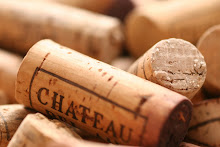 Wine investors speculating in the 2005 Bordeaux first growths should consider the 2005 Mouton Rothschild.
Wine investors speculating in the 2005 Bordeaux first growths should consider the 2005 Mouton Rothschild.First, the range of scores for these wines is not big. Parker scored them all in the range of 96-98+, so the price differences are not representative of relative quality.
The following chart shows today's pricing of the 2005 First Growths compared to their prices as futures in the summer of '06:
Wine..............Futures Price/Current Price ..... % Change
Mouton.................... $575/$570....................... -0.08%
Latour...................... $765/$980....................... +28%
Haut Brion............... $626/$660........................ +5%
Margaux.................. $712/$830........................ +16%
Lafite........................ $604/$1200..................... +99%
Over a long enough time span, inflation, diminishing supply, and a long window of maturity should be expected to drive all the 2005 first growth Bordeaux to higher prices. However, buyers of Latour, Lafite, and Margaux appear to be premature, and I would expect these wines to be at risk for a correction.
While Haut Brion may also appear to be poised for growth, anyone willing to pay $660 for a Haut Brion should have a close look at the 1990, or the 2000, both of which trade for around $600 at auction, and have a much lower supply, because we've been drinking them up.
The 2005 Mouton, in contrast, has not budged in price in the last three years. Older vintages (like the 2000 - $840) actually cost more, which is what a speculator would expect. It may be the first of the 2005 first growths to move higher from present levels.













